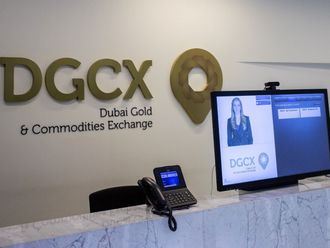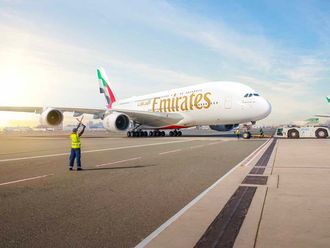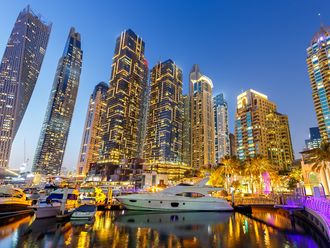In a rather unusual remark, Saudi Finance Minister Ibrahim Al Assaf challenged the IMF over its projections of economic growth for the kingdom this year. However, the minister did not offer an alternative statistic other than suggesting the assumed figure should be higher.
In a recent report, the IMF projected a real (adjusted for inflation) GDP growth of 4.4 per cent in 2013, down from 6.8 per cent in 2012. In fairness, the Fund attributed this to two causes, namely the reduction in both crude output and public sector spending.
At stake is not the sustained output capacity in the kingdom but rather possible developments on the international scene related to demand and geopolitics. The need for Saudi Arabia — the largest oil exporter in the world — to compensate the market for a possible drop in output from some producers such as Libya is no longer essential. Also, the market has all but adjusted to the Western boycott of Iranian oil.
In fact, the dampened GDP growth is partly a reflection of a steady rise in inflation rate. The IMF’s warning of inflationary threats is consistent with other reports, all pointing to a rise in prices. Nowadays, the talk is about inflation rate hovering at above 3 per cent.
Inflationary pressures are not unique, with consumption partly influenced by pilgrims to the holy shrines in Makkah and Madina. Millions of Muslims from around the world perform Haj annually. And millions more opt for Umra throughout the year especially during the second of the fasting month of Ramadan, this year falling in July.
Happily, economic fundamentals in Saudi Arabia are near perfect. This probably explains the recent move by S&P’s Ratings Services to revise the outlook for ‘long-term sovereign credit’ rating from stable to positive. Moreover, the agency has not ruled the possibility of upgrading sovereign rating in the too distant future.
Interestingly, the S&P report shed some light on steady non-oil growth, averaging around 8 per cent during the period 2005-12. Undoubtedly, this partly reflects positive contributions made by the private sector. This confirms the argument that the petroleum sector is not the sole major provider of growth in the Saudi economy.
In addition, the external financial strength of Saudi Arabia is noteworthy, and adding to the strong fundamentals. According to the Institute of International Finance (IIF), Saudi Arabia generated oil revenues to the tune of $352 billion in 2012. The figure represents some 47 per cent of total oil revenues generated by the GCC countries collectively.
Moreover, the value of sovereign wealth funds (SWFs) of Saudi Arabia is substantial, ranked second regionally after the UAE and fourth internationally. The Sovereign Wealth Fund, regarded as an authority in the field, puts the kingdom’s SWF via Sama Foreign Holdings at $533 billion in March of this year. SAMA or Saudi Arabia Monetary Agency serves is the central bank in kingdom.
Also, the strong financial position is a reality in another setting, namely the net foreign assets of the financial system under the Saudi Arabia Monetary Agency’s jurisdiction. The NFAs in the financial system amounted to $668 billion in April, representing a whopping 90 per cent of the country’s GDP.
These statistics confirm that the state of Saudi Arabia’s macro-economy is in great shape.












